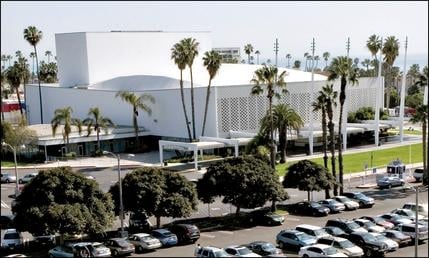
CITY HALL — In an attempt to protect redevelopment money from a potential state raid, the City Council voted to commit approximately $100 million to construction projects at its budget meeting Tuesday night.
The vote locks in money the Redevelopment Agency already has on hand — roughly $50 million in cash and $60 million in loans — to fund affordable housing, light rail improvements, the Civic Center Joint Use project with the school district, improvements to the Santa Monica Pier and a fire station, as well as several design-build contracts for approved projects.
Those contracts include the Palisades Garden Walk, Pico Neighborhood Library and the Colorado Esplanade.
It also gave permission for the Redevelopment Agency to seek approximately $36.5 million in tax allocation bonds to continue funding projects.
Santa Monica’s bonds have a double-A rating, according to Standard and Poor’s, which makes them more attractive to investors.
“Given the continued uncertainty at the state level, we think it’s an opportune time to establish these commitments,” said Andy Agle, director of housing and economic development.
That “uncertainty” is a threat by Gov. Jerry Brown to liquidate all redevelopment agencies in California to plug a $1.7 billion hole in MediCal and court costs.
By spending the money upfront on projects already approved in August 2010, City Hall hopes that the money will be safe from a state grab.
Not all projects passed muster with the City Council.
The original figure proposed for approval was $146.5 million, and included the renovation of the landmarked Civic Center Auditorium, a project that was put on a priority list for redevelopment funding in 1999.
Some council members were struck by sticker shock, both on the renovations and on the $46.1 million allotted to the Palisades Garden Walk park.
“I’ll be you a dollar to a donut that this is the largest amount of money ever spent by the City Council on one night,” said Councilmember Bobby Shriver.
Those involved with the Civic Center spoke during public comment to reinforce support for their cause, but Shriver and Mayor Pro Tem Gleam Davis questioned the logic of spending nearly $50 million on the auditorium, which is expected to lose approximately $1 million in good years.
That money could be better spent on one of the alternative projects listed in the staff report, specifically the renovation of Parking Structure 6, and the leftover cash could be used to support other, less expensive art initiatives, Shriver argued.
“It’s a risky proposition for us to invest $50 million in, whereas, as Councilmember Shriver says, the money could be spent on other artistic endeavors,” Davis said.
She also expressed concern about the flexibility of the site, which she hoped could be used not just as a theater venue but also as a gym or movie theater.
Council members Kevin McKeown, Pam O’Connor and Mayor Richard Bloom seemed shocked by the dissent.
“This budget comes to us after months of policy discussions, budget meetings, et cetera,” McKeown said. “It’s not as if this falls from the sky, it’s generated within the community. There has been lots of public input, and policy decisions that have been made.”
Both Bloom and McKeown worked with community members over several years to envision and vet the project, which is also ranked highly in the Creative Capital document, a master plan for the community’s cultural resources.
“I think that for us at this point in time, at the end of a process, to simply turn around and say we’re not going to do it would speak very poorly to our belief in the city, public process and paying attention to the folks we’re responsible to,” Bloom said.
However, only six council members were present, and Bob Holbrook, who has been out of the country for the past three weeks, wished to stay neutral.
Without the needed votes on either side, the council chose to approve the bulk of the projects, and leave the Civic Center decision for Thursday’s meeting.
Another hitch in the meeting came in the earlier discussion of the use of redevelopment money for the Civic Center Joint Use Project with the Santa Monica-Malibu Unified School District.
The joint use agreement promises $57 million to the district to renovate some fields and gyms. Approximately $1.1 million of that money has already been given to the school for planning purposes.
Of the remaining $56 million, only $5.9 million is available in the upcoming year’s budget.
That could be a problem, Shriver said, should the City Attorney’s Office turn out to be wrong about the state’s ability to take the remaining $50 million if the legislature approves Brown’s plan to kill redevelopment agencies.
City Manager Rod Gould confirmed that if the state took the money, it would be the school district, not City Hall, that would be on the hook for the remaining $50 million for the project.
Brown’s plan has not yet been approved, and his office reiterated Wednesday that the proposal prohibits existing agencies from creating new contracts or obligations if the legislation comes into effect.
“The bill however does include language that allows the state ample time to review projects that were fast-tracked, or funds that were sequestered by RDAs in response to the governor’s budget proposal,” said spokesman Evan Westrup.
ashley@www.smdp.com








